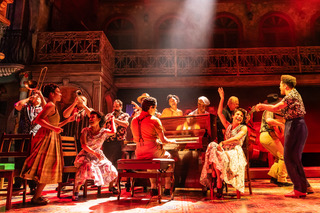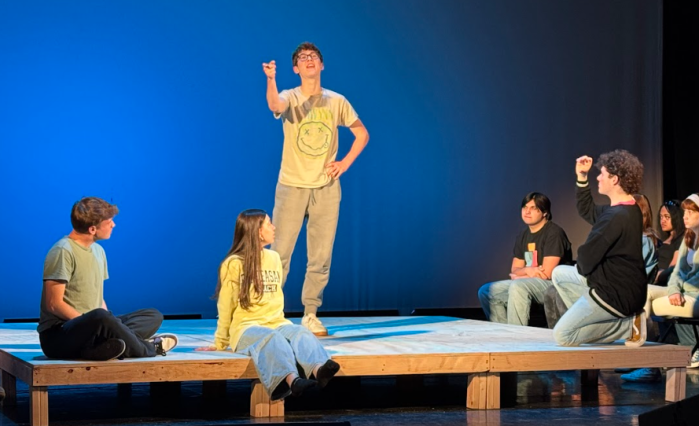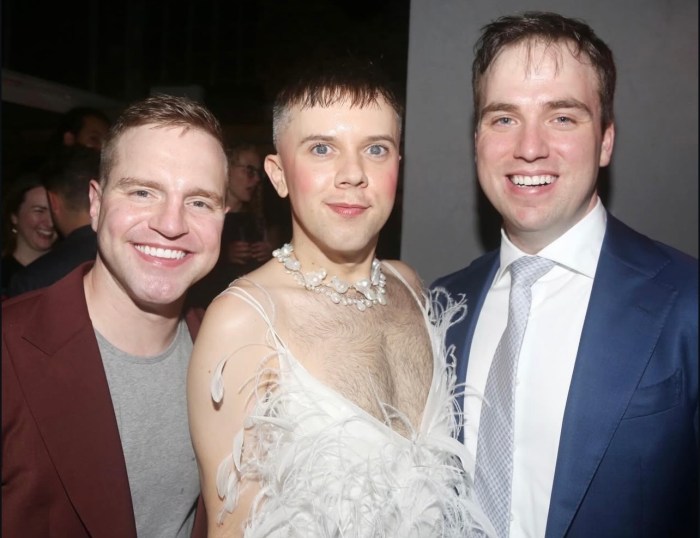The music of “Buena Vista Social Club” begins immediately at the Gerald Schoenfeld Theatre, setting the mood for the next two hours.
The incredibly talented band, onstage most of the time, seemed as delighted playing for us as we were to be listening to them and marveling at their virtuosity. Many in the theater seemed familiar with the tunes, and the woman next to me hummed.
The show begins with a true story about making a recording. A young producer gets the opportunity to produce a record featuring all the old Cuban music, so he reaches out to vocalist Omara Portuondo (a majestic Natalie Venetia Belcon.) Haunted by events from her past, Omara has a reputation for being difficult. Music evokes certain troubling memories for her.
It’s the 1950s, and the Cuban revolution is heating up outside, but the music inside the Buena Vista Social Club is even hotter. While the social club is now defunct, the music remains.
The musical, with a flashback taking us back 40 years and a book by Marco Ramirez, presents a young Omara (Isa Antonetti, whose slightness belies her powerful voice) and her sister Haydee (Ashley De La Rosa). The two are successful acts at the upscale El Tropicana, where affluent white people perform them. The backdrop is the Cuban revolution, but Omara’s sister has found a way for the two girls to escape to America.
In the meantime, young Omara has learned about Buena Vista Social Club and is thrilled at the music and the people she meets.
She is horrified when she learns about the racial prejudice of the Tropicana and that Ibrahim, a wonderful singer she meets, had performed at the club but kept out of sight because of his dark skin.
Her guilt causes her to avoid meeting with a record producer, and instead to join Ibrahim (Wesley Wray) singing at the club. Although her sister pleads with her to leave Cuba to avoid the revolution, Omara chooses to remain. Later, when another record producer offers Omara a contract, she accepts even though Ibrahim isn’t allowed to participate.
But the plot is just a device to present the music. Unlike the typical jukebox musical, the show makes no attempt to force the music into the story.
All the songs are presented as performances in clubs or recording studios. The Playbill includes a separate booklet, describing the various songs in the show, giving background and attribution. The music is glorious and is made more special by the fluid, sensuous dancing of the six skilled dancers, co-choreographed by Patricia Delgado and Justin Peck.
The show is based on a 1999 documentary that shows how Ry Cooder assembled a group of legendary Cuban musicians to record an album.
The album was named after a no longer-existing club in Havana where Black musicians gathered to perform. In 2020, the Library of Congress selected the film for preservation in the United States National Film Registry as being “culturally, historically or aesthetically significant.”
The show, which began Off-Broadway at the Linda Gross Theater, was so successful that it moved to Broadway. It was developed and directed by Saheem Ali (Fat Ham) with the assistance of his musical team, consisting of creative consultant David Yazbek (The Band’s Visit), music supervisor Den Sharenow and musical director, arranger and orchestrator Marco Pagula who has created a glorious musical event.
“The Buena Vista Social Club” is like a valentine, an enamorado, to the “artists of yesterday” who lived through the extremist times in Cuba, continuing to play the music they loved.
.




























